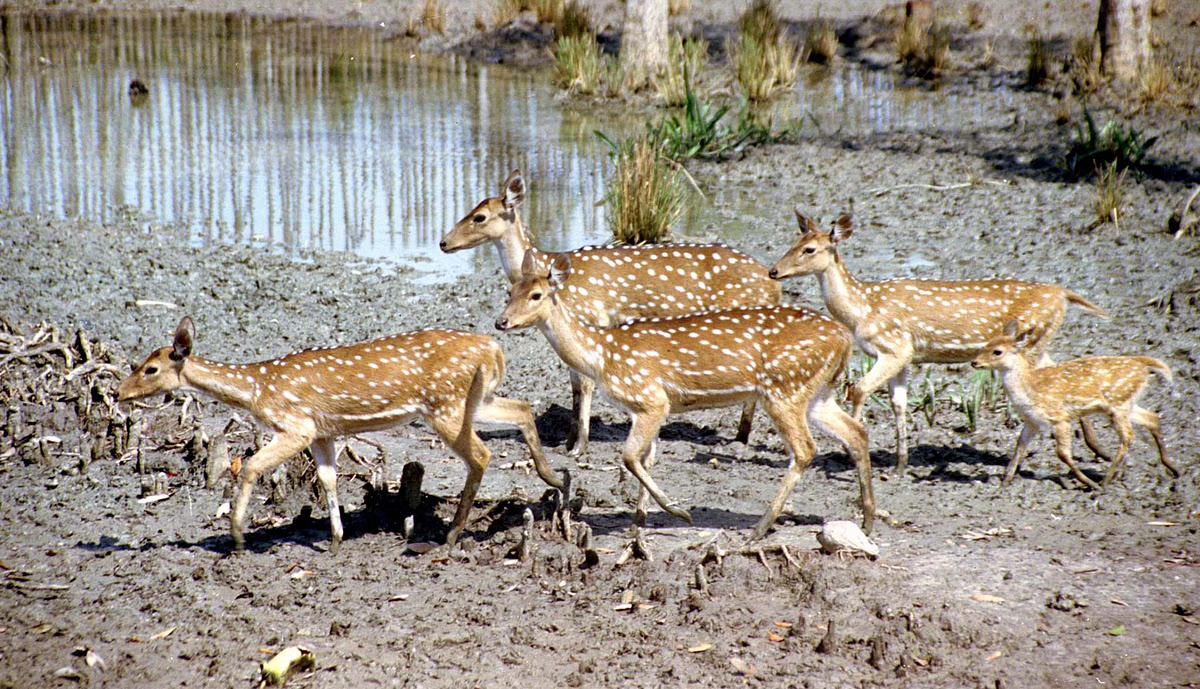





Copyright infringement not intended
Picture Courtesy: https://www.thequint.com/news/hot-news/spotted-deer-blackbucks-dead-in-nagpur-rescue-centre
Context: The Sri Chamarajendra Zoological Gardens (Mysuru Zoo) successfully translocated 40 spotted deer from its facility in Mysuru city to the Pansoli range in Kali Tiger Reserve in Dandeli, Uttara Kannada district, Karnataka.
About Spotted Deer
|
Feature |
Description |
|
Other Names |
Chital, Cheetal Deer, Axis Deer |
|
Origin |
Indian subcontinent (India, Sri Lanka, Bangladesh, Bhutan, Pakistan) |
|
Habitat |
Grasslands, open forests, scrub jungles |
|
Size |
Male: 90 cm shoulder height, 70-90 kg weight Female: 70 cm shoulder height, 40-60 kg weight |
|
Lifespan |
20-30 years |
|
Appearance |
Coat: Golden-rufous with white spots, white underbelly Antlers: Present only on males, three-pronged, curved, up to 3 feet long, shed annually |
|
Diet |
Grasses, leaves, fruits, flowers, sometimes consume shed antlers |
|
Social Behavior |
Lives in herds of 10-50 individuals, mainly females and young with 1-2 males |
|
Breeding |
Mating Season: Prolonged due to warm climate, females can conceive year-round Gestation Period: 227 days Offspring: Typically one or two fawns per litter, can birth twice a year |
|
IUCN Status |
Least Concern |
|
Some Facts |
Can run up to 60 km/h (37 mph) in short bursts. Antlers signal dominance; larger, harder antlers indicate higher social status. Can ingest their shed antlers for calcium and other nutrients. Play an important role in their ecosystem by dispersing seeds through grazing. |
Kali Tiger Reserve (KTR)
Geographical Features
Flora
Fauna
Tribals
|
PRACTICE QUESTION Q. Which tribal community is NOT traditionally associated with the Kali Tiger Reserve? A) Siddi B) Halakki Vokkal C) Gond D) Thanadar Answer: C Explanation: Siddi, Halakki Vokkal, and Thanadar are all mentioned in news articles and other sources as being present in the Kali Tiger Reserve area. Some specific examples include: ●Siddi: Their presence is documented in news articles discussing issues impacting them within the reserve. ●Halakki Vokkal: Their traditional practices and challenges related to the reserve are mentioned in various sources. ●Thanadar: Their collaboration with the reserve authorities for conservation initiatives is documented in news reports. Gond, while being a well-known tribal community in India, is primarily concentrated in Central India, particularly in states like Madhya Pradesh, Maharashtra, Chhattisgarh, Telangana, and Andhra Pradesh. These regions are geographically distinct from the Western Ghats, where the Kali Tiger Reserve is located. Therefore the Gond tribe is the least likely to be traditionally associated with the Kali Tiger Reserve due to their established geographical location in Central India. |







© 2025 iasgyan. All right reserved